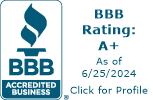MooHoo! What Savvy Farmers Know About Raw Milk Demand That You Don’t
We’re always inspired by stories from our customers, and I thought you might enjoy hearing about a farmer friend of ours who has seen his dairy business transformed by an unexpected surge in demand.
For over 50 years, he’s been quietly raising dairy cows, providing for his local community. But recently, he’s found himself selling up to 50 gallons of raw milk a day! The demand has grown as more families become conscientious about what goes into their food, and it turns out many people who are lactose intolerant can actually tolerate raw milk. This discovery has opened up his business to a whole new audience.
His farm is mooing with activity like never before.
Adapting to Growth with Quality Fencing
With this growth, he’s realized the importance of quality fencing to support his operation—from keeping his livestock secure to protecting his expanding facilities. He’s making sure his dairy cows stay safe, his property is protected, and his growing farm can continue to thrive.
Fencing Solutions for Your Farm
If your operation is experiencing changes or expansion this season, Louis Page is here to provide the fencing solutions that help you adapt and grow confidently. From livestock fencing to property boundaries, our materials are built for durability and safety, giving you peace of mind as you focus on what you do best.
And if you’d like to talk about what you need for your farm or property, our expert Terry is here to help—just give her a call at 978-486-3116.
Wishing you all a successful and secure fall season!
All my best regards in gratitude,
Debbie Page
CEO, Louis E. Page Inc – Woman-owned business and Family-owned since 1893. (131 years of continuous service through 2 world wars and 2 pandemics!)
P.S. Here’s to growth, security, and thriving farms! Call Terry at 978-486-3116 to discuss your fencing needs.










